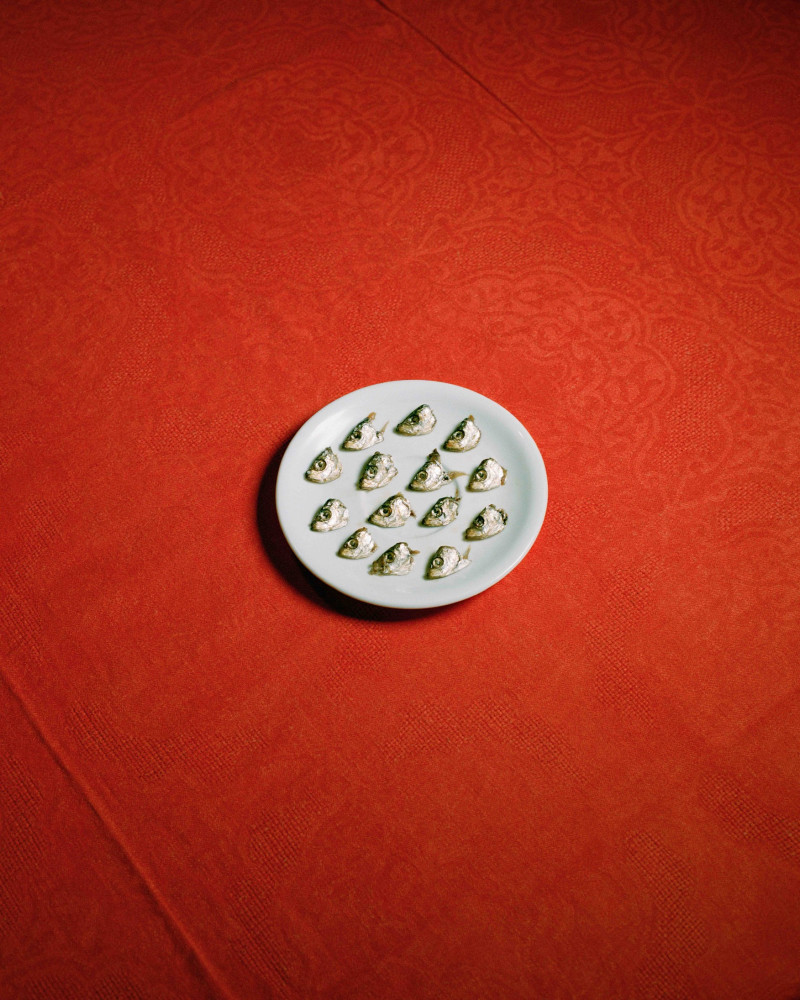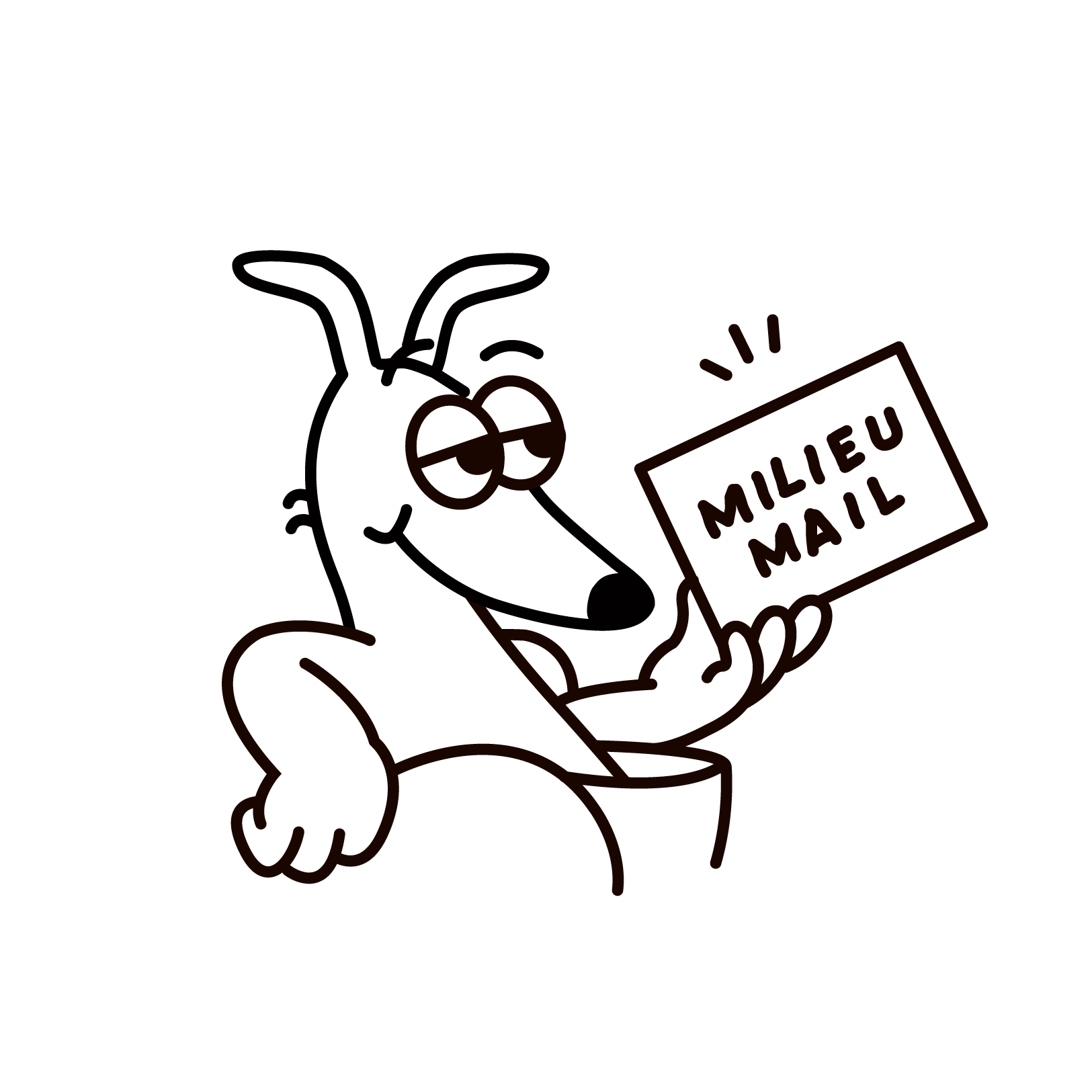A World of Abstractions with Euan Heng
Interview by Nick Smith
Photography by Morgan Hickinbotham
Euan Heng is a Scottish born artist based in Melbourne since 1977. His work is an exploration of the things he has seen, heard or remembered. He has exhibited at galleries both nationally and internationally and has been an incredibly influential figure in the educational system, having held professorships and lectured at various institutions globally. Euan recently retired from his role as Associate Professor in Fine Art at Monash University just last year.
I arrive at Euan’s beautiful home in Clifton Hill, ring the doorbell and wait while the sound of barking grows louder and louder. Euan opens the door and I am met by his adorable whippet Betty who proudly leads me down the hallway into the kitchen and quickly retires to her bed. We make tea and move through the courtyard into a small, brightly lit extension at the back of the house where Euan has fashioned a beautiful home studio.
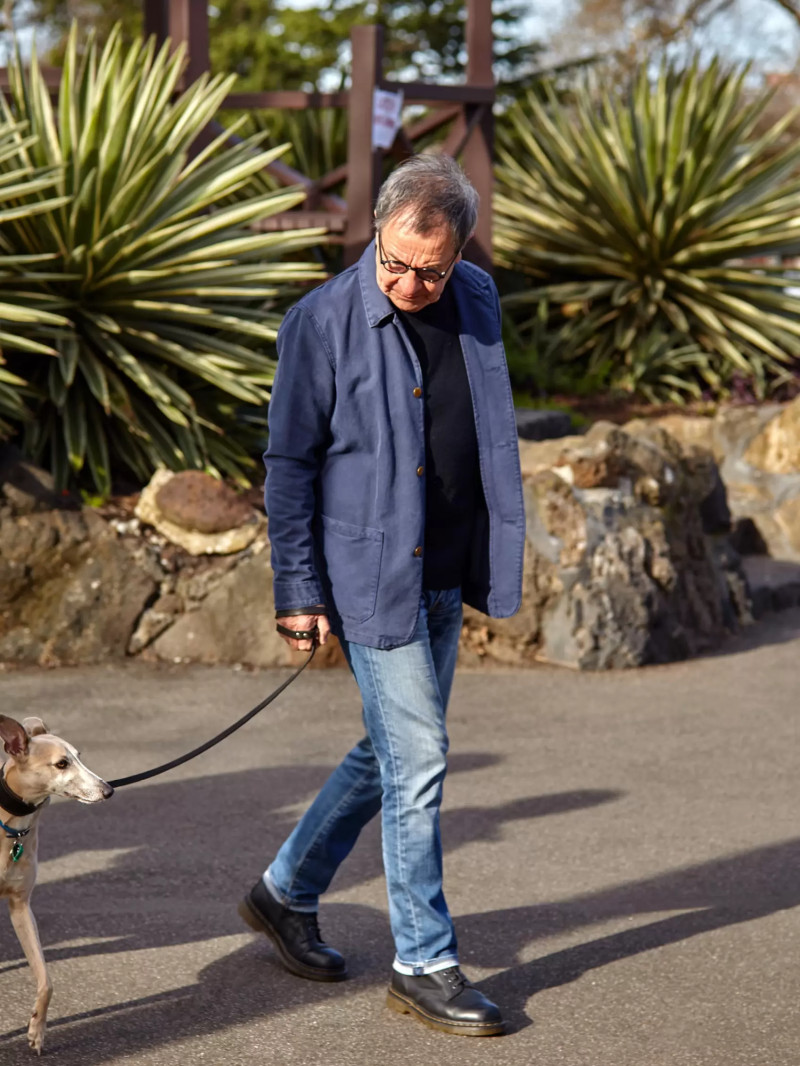
Euan and Betty on their daily walk in nearby Darling Gardens
Nick Smith: So you grew up in Scotland. What was that like?
Euan Heng: Well, I was born at the end of the second world war in Oban which is a fishing port in the Northwest of Scotland. When the war ended we moved to live in a mining village near Glasgow with my grandmother. My father was a merchant seaman so he ended up getting a job on the docks as an engineer, building ships. At that time, apart from a few Italian and Polish families Scotland was a monoculture, but we were the only Eurasian family in our area. So, when I turned fifteen in 1960 I left and moved out on my own.
NS: What spurred that decision?
EH: I didn’t like school. I hated it actually. So as soon as I was of age I got a job on a farm in regional Scotland and then moved to London. I got a job instantly because they were easy to get in those days. But I was struggling, so I decided to go to sea. My father, brother and even my grandfather spent time at sea so I went to merchant naval training school and by the time I was sixteen I was at sea. It was my escape.
NS: How long were you at sea for?
EH: Off and on I sailed from the age of sixteen until just before I went to art school at twenty five. I sailed solidly for about four years, coming out here to Australia and visiting Asia. I came ashore after I got married but later returned to sea for a year until our second child was born. I started college in 1970. I’d always wanted to study art and there was ample opportunity so I just did it. I did an undergraduate degree, then my postgrad and then started to lecture, so I automatically found myself in academia.
NS: Was that a nice transition or did you feel you weren’t able to get a break from the institution.
EH: Because I’d been at sea, being at college didn’t phase me. I really enjoyed that time but when I turned thirty I thought “What now?” A lecturing opportunity came up so I took it. My wife’s parents were in Australia so we decided we’d come out for five years to get some overseas experience and then I’d be able to get a really good job when we went back but instead, we decided to stay.
NS: And you’ve ended up holding teaching positions at various universities across the world… What do you find is the most rewarding part about being an educator.
EH: Definitely the students. Towards the end of my tenure I was working with Masters and PhD students almost exclusively but my most rewarding students were the first years. That’s where a lot of the major breakthroughs come from. You see them come in and they’re really enthusiastic, they’re less cynical and they’re open.
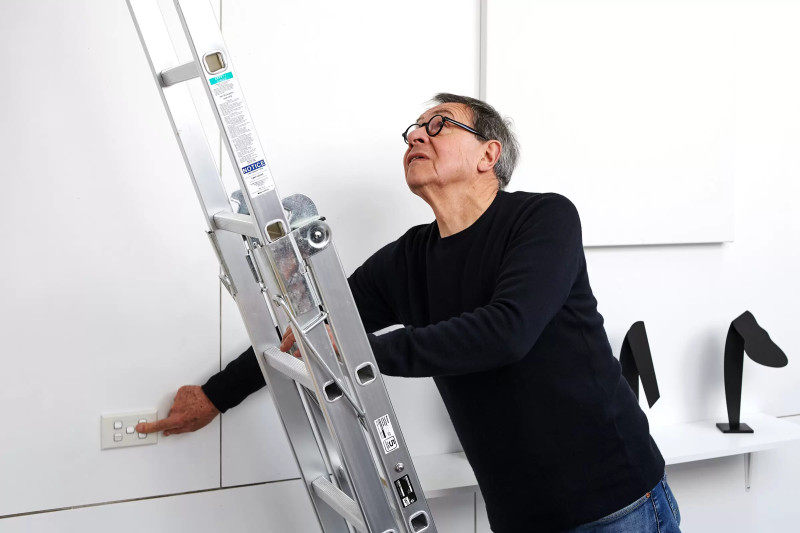
Euan fetches some old drawings from the studio storage space
NS: Was there a catalyst moment that made you decide to pursue a career as an artist?
EH: Well I’ve always been interested in art. My father was a model engineer and he’d occasionally take me with him to the Glasgow Art Gallery and Museum which had a fantastic model rail and ship collection. He was an award winning scratchbuilder so he’d go in and make notes for the ships he was making. I would go with him and to keep myself occupied I’d spend time drawing the paintings and sculptures. Also when I was travelling at sea and living in London I spent a lot of time in the galleries because they were free and I had no money.
NS: What’s the process when you’re developing a concept for a work?
EH: I’m not a conceptualist, ideas don’t come before the work but are always fond within the work. Nevertheless, during the making of a work I may introduce visual quotes in the same way musicians make quotes or sample. It’s a cumulative process as each work follows and builds into the next and that runs over years. I generally start by making these working line drawings on brown paper.
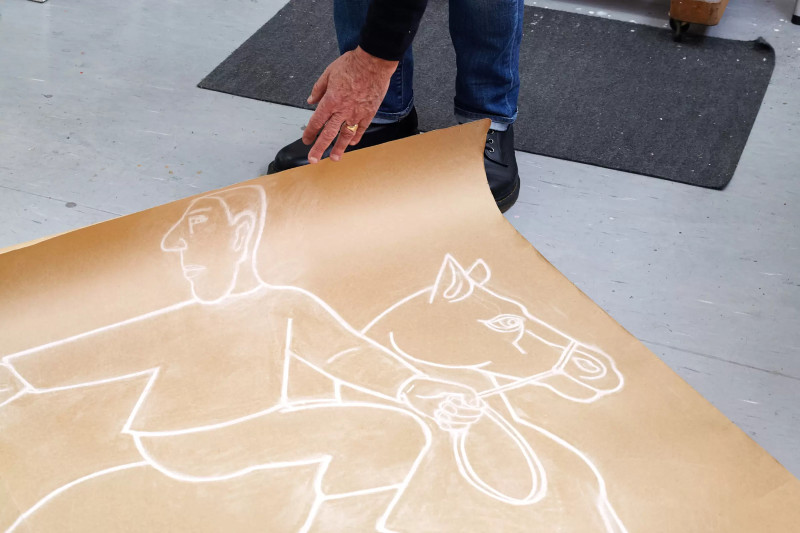
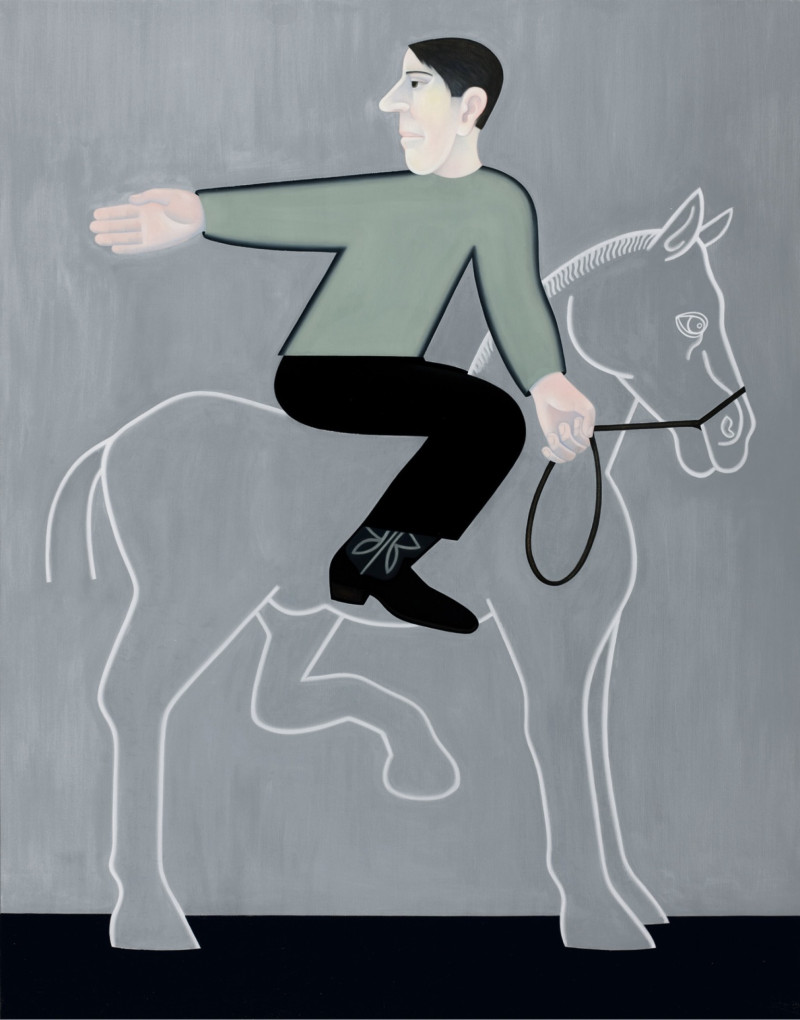
Semaphore, 2008, oil on linen, 142.5 x 112cm
NS: Like blueprints?
EH: Yeah, they’re blueprints. Once a drawing is finished I’ll transfer it, and then you begin to paint. Within each work there might be similarities and motifs but every work will have subtle differences which don’t appear until you’re actually painting. You can’t predict it.
NS: So it’s an ongoing evolution?
EH: Absolutely. My early work was based on observation, perception and to a degree, narrative. I began introducing the notion of abstraction as a means to explore the way the shapes could be arranged to make greater pictorial sense and visual impact and create a distance from narrative. Right now, what I’m trying to do is bring all of the earlier stuff back in, but explore it in a new way. It’s trial and error. I constantly question the work and there’s always doubt involved but I’m a really strong believer in the intelligence of making, which is equally as rigorous as any other kind of intellectual engagement. In the last decade it’s disappeared a bit but I have this strong feeling it’s returning slowly. I examined last year for RMIT and I thought “Shit. They’re making!” Everybody was making… and really intelligently.
NS: So it’s creeping back?
EH: Yeah. There was this guy who had created an environment on the table, under glass, with bark and bits of stone and sand. Obviously there’s an ethical conflict, but he’d put ants inside this environment and as the ants moved around there was a camera that was filming them. He’d taken the movement of the ants through the lens, and then using an algorithm, he’d developed a way of measuring the distances they travelled and converted that into sound. The sound was transmitted to another room where he had speakers arranged in a circle that were emitting electronic music. It was really interesting because the music would change as the ants moved around so it was never at any point static or repetitive. The music was then transmitted up to the other side of the building where a computer converted that music into movement via a machine he’d created that drew on the wall.
NS: Wow...
EH: It was much better and far more complex than I’ve explained but everything he’d made was beautiful. The drawing machine was stainless steel and so beautifully made. I thought “Well here’s someone who’s working with new technology, maths, invention and at the same time the actual drawings being produced were also beautiful in their own right. So the intelligence of making is starting to appear again. I’ve also seen this new interest in ceramics start to emerge. I know a lot of artists of my generation who have started working with ceramics but the younger artists who are doing it are not as conservative. They’re not reactionary. They’re not going back to something else. They’re adding something new and that’s the difference.
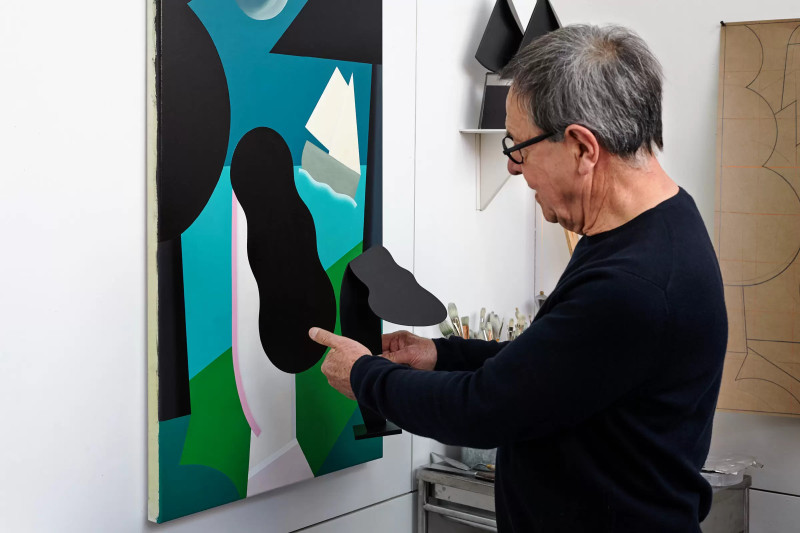
Euan explaining the relationship between the figure in the painting and a new sculpture
NS: And how does making relate to your work?
EH: The process of making informs everything I do. Painting is making and superficial painted surfaces don’t interest me, I’m not just colouring in, I’m building towards a painted completion. No matter what a painting depicts, in the end it’s an object that’s been made and that’s no different to my recent foray into sculpture. Initially each new work is explored and made from cardboard which is just a simple and cheap method of trying and testing to bring the motif into three dimensional reality. If satisfied I will then make the drawings that will underpin their fabrication into steel.
NS: In regards to the tertiary education system. Do you feel it’s morphed into something negative when it comes to the arts?
EH: Even the very best universities like Melbourne, Monash and Sydney still have a commercial dimension to them. It’s a user pay system so the students are paying money for their education, they’ve become clients. Also the way units are packaged, the credit system and the reduced semesters have an impact. It’s now about a particular type of efficiency. I don’t believe in a free for all where you’re wasting money but at the same time the current system does put pressure on academic staff which in turn disadvantages students. In the current economic and political climate I don’t think the arts are truly valued. And I mean all of the arts. I think there’s a deep suspicion about what the arts actually are and in particular, contemporary art.
NS: I agree. Just as a last question, where do you find true happiness?
EH: To be honest I don’t think there is such a thing. I think seeking true happiness is possibly the road to unhappiness because the politics of the day don’t really give opportunities or present the right conditions for true happiness.
Euan Heng is represented by Niagara Galleries and is working towards an exhibition in early 2018. For more about Euan’s work visit his website euanheng.com.
To stay connected with Melbourne Milieu, please follow us on Instagram.

